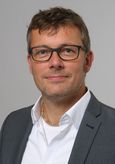Project
Circular Economy for Wood

Determination of status quo and options for action for a circular economy in the forestry and wood cluster. Investigation of circularity and development of transformation-oriented recommendations to improve sustainable consumption through cascading use of wood and wood products
Sustainable resource use will determine our economy and our way of life in the future. A transformation of the current predominantly linear economy requires that the raw material potential of previous waste materials is more strongly recognised and used. The Circular Economy approach goes beyond the pure idea of efficiency and consists of a systemic change in the use of raw materials and value creation. The longer the raw material wood remains in the material cycle, e.g. through intelligent product design and recycling processes, the less pressure there is on primary raw material sources and the potentially associated negative environmental impacts.
Many wood products can be reused or processed into other products after their original purpose has ended. In addition to conserving renewable resources, this extends the climate-relevant carbon storage in wood. However, waste collection, the dismantling of buildings or reprocessing lead to the shredding of products and components, which reduces the options for further utilisation.
Background and Objective
Currently, energy use is of great importance as the last utilisation step in the cascade use of wood and wood-based products. Only about 20 % of waste wood is materially reused in chipboard. Although the energetic use of wood is classified as CO2-neutral and has its importance as a bridging technology for the conversion of the energy sector, this project aims to establish the consistent and repeated material use of resources and thus a circular way of thinking, which is crucial for the efficient use of raw materials. Through this, the utilisation pressure on renewable raw materials is to be dampened, sustainable raw material provision for economic use is to be secured and the greatest possible climate protection effect is to be achieved.
Of the approx. 8 million tonnes of waste wood produced annually in Germany, less than 20 % is used as material. The majority of this is used in the chipboard industry, as this process can technologically handle wood that has already been dried and pre-shredded into irregular sizes very well. Shredding is currently one of the established processing methods for homogenising the wood to a uniform size. Much of the shredding takes place at the end of the product's life before the material can be qualitatively sorted. Unlike other materials, wood has to be reassembled with adhesives after it has been shredded in order to manufacture products. In terms of value retention, timber components from buildings, for example, could be preserved in their size during dismantling so that they can be used again in high-quality applications.
The Forestry & Wood Cluster currently has to deal with two questions:
- How can the handling of secondary raw materials that are currently in the material cycle be made safe and sustainable, and what potentials are available?
- How can products be designed in accordance with the CE concept to ensure that material cycles are closed in the future?
While the ideas of a circular economy are already being discussed in many parts of society and are partly being implemented, the Forestry & Wood Cluster lacks fundamental and overarching approaches that support the coordinated orientation of the stakeholders ("common vision").
The aim of the investigations is to determine and analyse the parameters that have a major influence on the reuse of wood and wood products at the highest possible level of value creation. In the future, these can be analysed more closely or incorporated into regulatory frameworks in a transformation-oriented manner. The multiple utilisation of resources ensures sustainability along the value chain. As the production, manufacture and utilisation of wood-based products often takes place in rural regions, regional value creation in rural areas and thus the creation of equal living conditions is supported.
Approach
Our Research Questions
Thünen-Contact

Involved Thünen-Partners
Duration
2.2023 - 1.2026
More Information
Project status:
ongoing







